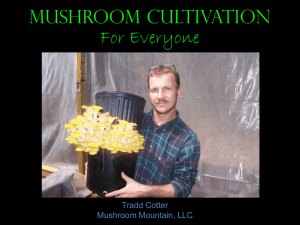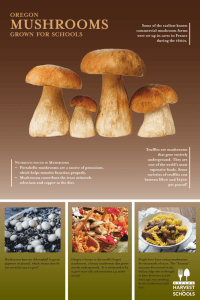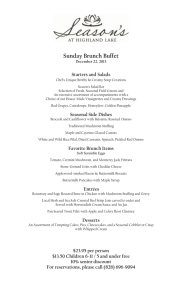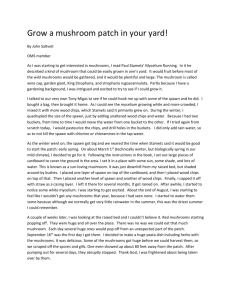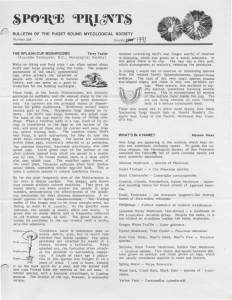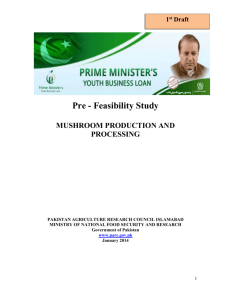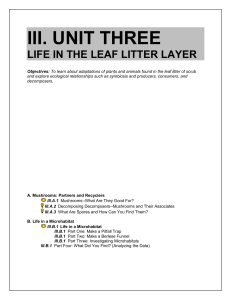Wild in the City: The fascinating field of fungi A mushroom hunt at the
advertisement
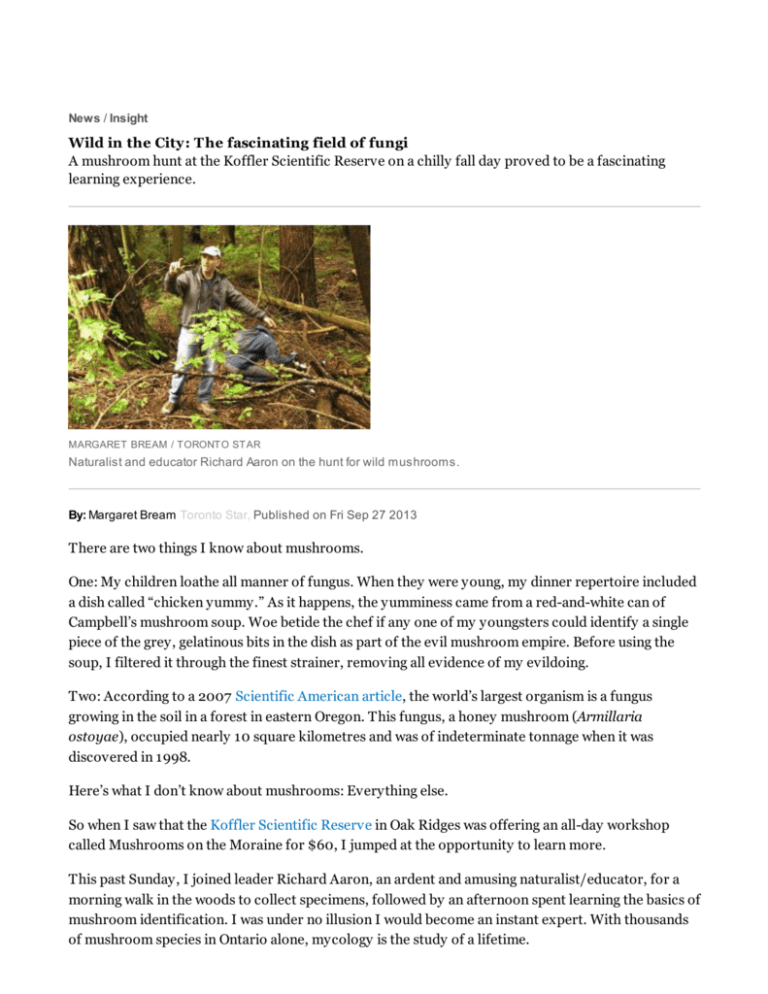
News / Insight Wild in the City: T he fascinating field of fungi A mushroom hunt at the Koffler Scientific Reserve on a chilly fall day proved to be a fascinating learning experience. MARGARET BREAM / TORONTO STAR Naturalist and educator Richard Aaron on the hunt for wild mushrooms. By: Margaret Bream Toronto Star, Published on Fri Sep 27 2013 There are two things I know about mushrooms. One: My children loathe all manner of fungus. When they were young, my dinner repertoire included a dish called “chicken yummy.” As it happens, the yumminess came from a red-and-white can of Campbell’s mushroom soup. Woe betide the chef if any one of my youngsters could identify a single piece of the grey, gelatinous bits in the dish as part of the evil mushroom empire. Before using the soup, I filtered it through the finest strainer, removing all evidence of my evildoing. Two: According to a 2007 Scientific American article, the world’s largest organism is a fungus growing in the soil in a forest in eastern Oregon. This fungus, a honey mushroom (Armillaria ostoyae), occupied nearly 10 square kilometres and was of indeterminate tonnage when it was discovered in 1998. Here’s what I don’t know about mushrooms: Everything else. So when I saw that the Koffler Scientific Reserve in Oak Ridges was offering an all-day workshop called Mushrooms on the Moraine for $60, I jumped at the opportunity to learn more. This past Sunday, I joined leader Richard Aaron, an ardent and amusing naturalist/educator, for a morning walk in the woods to collect specimens, followed by an afternoon spent learning the basics of mushroom identification. I was under no illusion I would become an instant expert. With thousands of mushroom species in Ontario alone, mycology is the study of a lifetime. The forest at the reserve was darker, damper and chillier than I was expecting for a sunny day in midSeptember. When Richard spoke, with the sun’s rays slanting through the trees behind him, you could see puffs of his breath, like little clouds. But the cold did not deter our group, some 16 strong, that included experts and interested beginners alike. Some folks just wanted to learn how to identify edible fungi. Each of us carried a collecting basket and loupe provided for the day. In addition, Richard wore a Crocodile Dundee-sized knife on his belt, for digging deep into the soil or a stump to extract the samples we would identify later. As we made our way through the forest, Richard pointed out the enormous range of organisms classified as fungi: everything from bracket fungi and jellies to gilled mushrooms and boletes. He explained that the parts we see above ground, the so-called fruiting bodies, are only a small part of the entire fungus: the rest consists of fine thread-like webs hidden under the soil, in wood or other habitats. He pointed out pitfalls in identification. Even with the best field guide, it can be very difficult to match a specimen in the field with its photo in the guide. Mushrooms in the forest may be older or younger than their idealized versions in a book, may be coloured green by algal growth, partially decomposed by bacteria or mould, or nibbled on by creatures such as deer or slugs. When he suspected a fungus harboured a distinctive odour, Richard smelled a specimen. One fungus we found in the woods (Trametes suaveolens) had the sweet smell of anise that could be detected a metre from the log it was growing on; another (Micromphale foetidum) had an unpleasant odour, while the bright-coloured orange lobster mushroom (Hypomyces lactifluorum) smelled peculiarly fishy. Richard pointed out a chaga mushroom (Inonotus obliquus) parasitizing a yellow birch tree, a fungus Aleksandr Solzhenitsyn wrote about as a treatment for cancer in his novel Cancer Ward. Richard also showed us the tinder polypore (Fomes fomentarius), a fungus that grows in the shape of a horse’s hoof on tree trunks. It is known to have been used for several thousand years to help start fires. Back in the classroom in the afternoon, we spread our samples out on a long table and Richard estimated we had collected about 75 different species. He reminded us of the difficulty — and importance — of getting a 100 per cent correct ID, especially when the goal is to determine edibility. With many mushrooms deadly poisonous, there is no room for mistakes — or bravery. Richard recounted the famous aphorism: “There are old mushroom hunters and bold mushroom hunters, but no old, bold mushroom hunters.” There was no need to warn me. While I was delighted to participate in the workshop — a humbling experience to be in the presence of such a knowledgeable naturalist — I would never consider eating a mushroom from the forest. From a can? That’s a different story. mbream@thestar.ca



